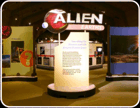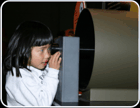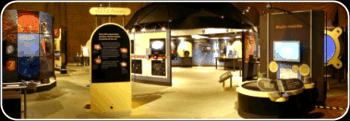
This area introduces the scope of Alien Earths—from the atomic to the galactic. Humans fall between the microscopic and telescopic views. Where are planet hunters finding alien worlds? Find out on a light-box portrait of the Milky Way galaxy. Our technology can only search a relatively small region near our solar system. But even so, scientists exploring our galactic neighborhood may discover something astonishing: a distant world that harbors life.
Stars are born in clouds of gas and dust that condense under the powerful force of gravity. Learn about star birth and the life cycles of different types of stars. Explore the behavior of infrared radiation and how scientists use it to peer into stellar nurseries. You can even create your own solar system, set it in motion, and observe whether your creation results in a stable system.
Until very recently, the only planets we’d discovered were all within our solar system. Since we can’t travel across the galaxy at the speed of light or see a planet orbiting a distant star, how did we discover more than 150 extra-solar planets so far? Learn about the ingenious methods that scientists have developed for finding planets that we cannot see.
What we know about life on Earth informs our search for life beyond Earth. You may be surprised to learn that our planet’s most abundant life form is the microbe. What would a habitable world’s chemical signature be if it were reduced to a pinpoint of light observed from a great distance? And if you wanted to find signs of intelligent life, what would you look and listen for?





